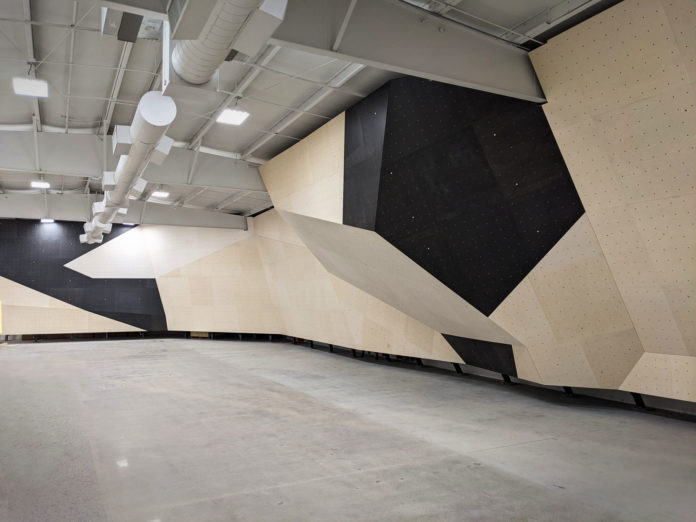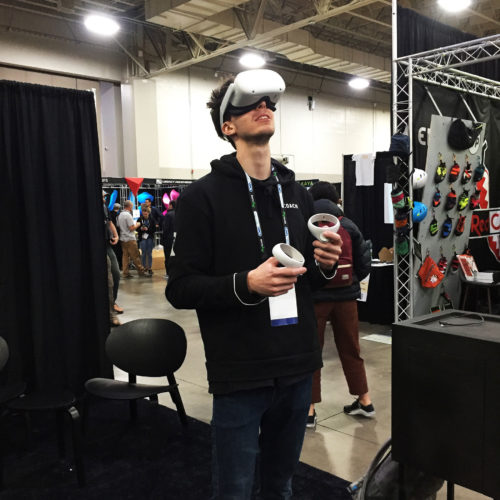
Would you buy a house based merely on the photos in a Zillow listing? Often, perceptions of an environment can change when you are physically immersed within the space, feel the quality of light, and understand the scale of the features. A building that looks perfect in photos can feel cramped in person, be poorly arranged, or not have the right flow for walking through. This is the philosophy of the Montreal-based company OnSite, which uses virtual reality headsets to help their clients get a true feel for the climbing space they plan to build.
Leveraging New Technology
OnSite has been developing climbing gyms for the past six years, producing gyms such as Grip Bouldering in Colorado and Climb Woodlands in Texas. The company aims to bring new innovation to the industry every year, and a couple of years ago the OnSite team decided to try to improve the design phase in a unique way. In a brainstorming session, Virtual Reality came up as the most intriguing option to explore, something no other company in the climbing industry had tried, to their knowledge.
After six months of programming and internal development, OnSite has created a system that is user friendly for both the design team and the client. “We are able to do this right now because of the Oculus Quest headset from Facebook, which is super easy to use,” says Francis Larose, OnSite’s CEO. “Architectural firms already use VR, but it requires a lot of techies and four to six hours to do the setup, and you need to bring the client in house to use it. On our side, we send the headset directly to our client, and they can play directly with it in five minutes.”
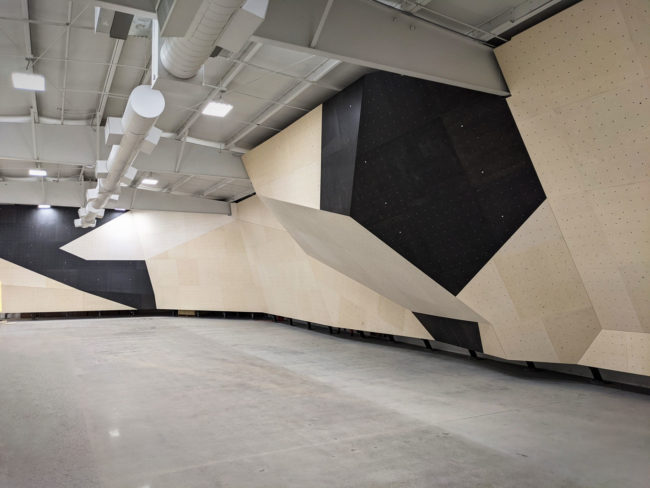
Removing Ambiguity
“A climbing gym is a combination of architecture and furniture,” Larose says. The walls themselves are a functional piece of equipment designed to meet a specific purpose. Yet, the prominence of the walls inside a gym means that they can be looked at from an architectural or interior design perspective. It is important to consider how people will circulate around the walls and interact with them, how the structures will affect the natural light, and how the colors and patterns on the walls will contribute to the vibe in the gym.
In a typical gym design process, a company creates two-dimensional drawings or renderings that are sent to the client for review. Design decisions are made based on these depictions, but there is a lot of personal interpretation involved in translating the 2D drawings to what that means for real 3D space. Looking at an illustration, someone might think a certain feature is too small or too large, but then when they see the feature in person, they change their mind. During a traditional 2D design process, the client is only able to make these decisions during the construction phase, when most large changes can no longer be made. Virtual Reality helps to remove this ambiguity and personal interpretation from the design phase.
“You look at a 65-foot-tall climbing wall and you see the roof at 65 feet. It either looks huge or small. There is no interpretation because you can look at it,” Larose says. Using VR in the design concept stage allows OnSite to receive higher quality feedback from clients, which in turn allows them to deliver a gym that is exactly what the client wants.
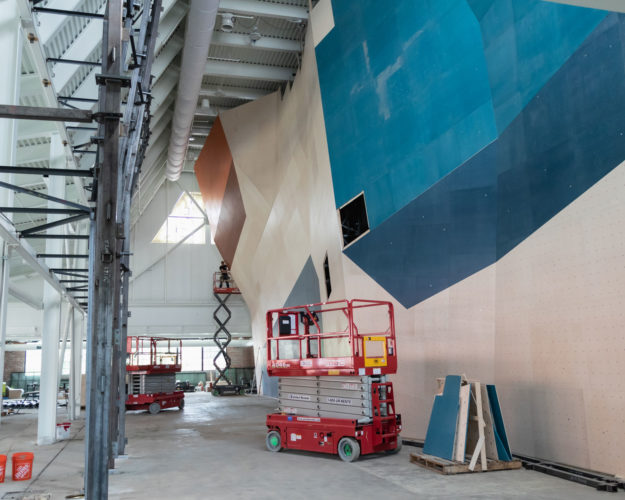
One of those clients is ASCEND, a climbing gym chain in Pennsylvania and Ohio. ASCEND is in the process of working on multiple facility upgrades and new gym projects, including the recently opened ASCEND Point Breeze. The brand-new gym features 14,000 square feet of roped and bouldering walls for climbers of all ages, 5,000 square feet of flooring underneath, and two adjustable training walls―all made by OnSite and designed with the support of VR technology.
“Being able to see the gym in virtual reality was a huge help in the design process,” says Aaron Gilmore, Co-Founder and Director of Facilities Management at ASCEND. “It instilled the confidence that the project was going to turn out the way we had imagined.”
Confidence in Decision Making
OnSite wanted to incorporate VR into the quoting and design phase for exactly the reason Gilmore pointed out: to give clients more confidence around the decisions they are making about a huge investment. “When you design a climbing wall, everything has a big scope, because you’re investing in a critical piece of the build that takes up a lot of space and will be there long term,” Larose says.
Larose gives an example of the decision-making around the color pattern of a large lead wall. “Almost every time when we are using 2D, we receive feedback from the client or in our internal review that the color seems too heavy, overwhelming,” says Larose. “Other designers may say, ‘Yeah, but did you forget it’s gonna be really huge? I’m sure it’s gonna be good on the wall once it’s actually painted.’ But this is a personal opinion. When you put a VR headset on your face, it changes the discussion. You see the scope and you can just swing your head right and left and see the color pattern applied.”
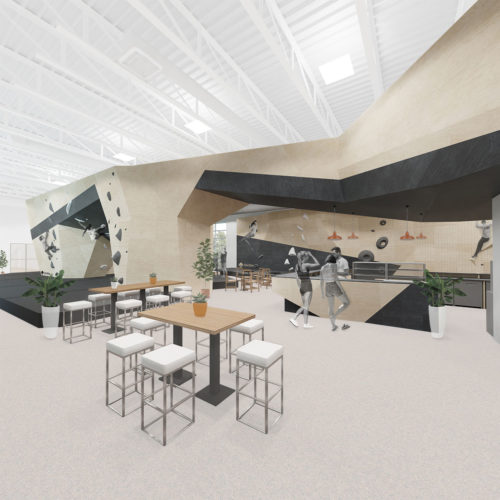
When working with clients who have used this VR technology, OnSite has found that sometimes people make different decisions than they expected at the outset, and they are more confident in those decisions. VR has allowed them to know exactly what they will be getting and to request very specific changes to meet their vision.
That innovation has been appreciated by Patrick Lamothe, the President and founder of Altitude Gym in Quebec and Ontario. Lamothe has worked with Larose and the OnSite team on projects new and old, outdoors and indoors, and innovation has been a core component of that business relationship since the start. “Insane!” Lamothe said after working with OnSite on the latest of these projects―a new gym in Ottawa, due to open early next year―using VR technology. “OnSite has innovated again. Designing a climbing wall is now even easier with VR.”
The Process
OnSite is able to create quotes using VR technology within 1-2 weeks. The company ships an Oculus Quest 2 headset to each client at the same time that they send the quote, and the client keeps it for the duration of the design process. Every time there is a new iteration to the design or the plan, there is an update created in the VR software that the client can then look at. “It probably adds about 30% more time to the preparation of each quote,” Larose said. “But eight extra hours is not a big deal compared to the thousands of hours that are often spent on the design phase. We think that because of the benefits it provides us and the client, the investment is worth it.”
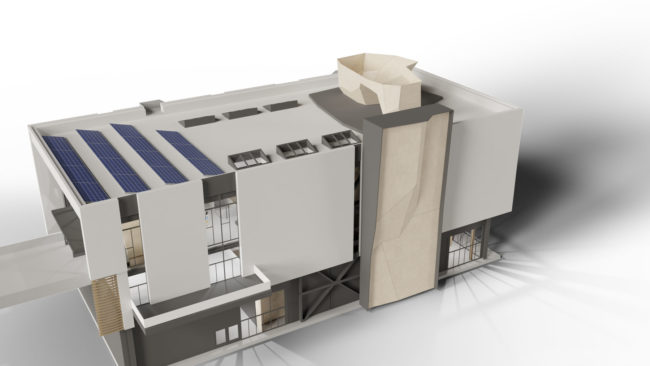
That investment is all-the-more vital when it comes to larger gym projects, a concept that the VITAL climbing gym chain understands well. After expanding to the East Coast in 2021, VITAL―which operates seven gyms across California, Washington and New York―is getting ready to announce two more gym projects that were initially quoted by OnSite with the help of VR technology, a tool that owner and co-founder David Sacher has appreciated during that process.
“I am very familiar with working with 3D models, and was skeptical that a VR experience would provide any additional benefit. But as soon as I entered the space in VR, I completely changed my mind,” Sacher says. “It’s extremely useful. It allows you to easily and naturally experience what the space will be like, and reduces the cognitive load of trying to visualize things in your imagination. After trying this only once, it now seems like an absolutely essential part of any design process.”
Still, all the technology in the world can only take a gym project so far. Equally important is the team of professionals that’s putting those tools to good use, and OnSite’s crew has been making the most of VR technology in the creative process. “OnSite was incredibly thorough and creative even in their initial design,” says Sacher. “They turned out a full concept for us very quickly, including millwork, layout ideas, and a full climbing wall. This speaks hugely to their competence and willingness to go the extra mile for customers. Their team was supportive and fun to work with the entire way through.”
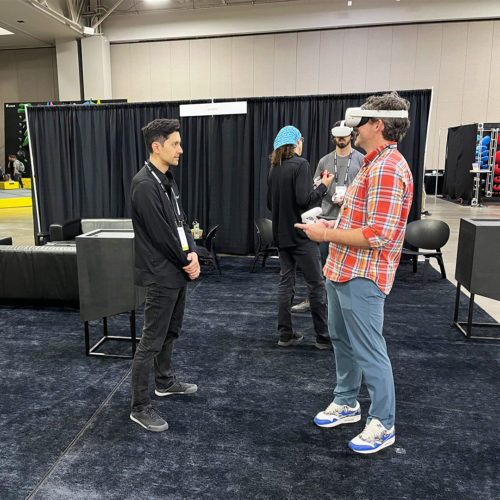
A Splash at CWA
Last year OnSite used VR technology in about 8-10 quotes for a soft launch of the new process. After seeing how successful it was, this year they decided to make a much louder announcement. At the CWA trade show’s return, OnSite prepared a VR demonstration where visitors to their booth could don a headset and walk through OnSite gyms. But they decided to take it one step further for the demonstration and allow interactivity. While wearing the headset, viewers could change the color or geometry of the gym’s space by the push of a button. This allowed users to get a sense of the type of design changes they could request after using VR to view a gym design. “Everyone was blown away and it’s a major game changer,” Larose says. “We did not receive one bad comment.”
Looking Forward
Larose and OnSite envision VR as the future of climbing gym design. Last year, practically all the contracts they signed were due in large part to this technology and the ways it assists a gym owner in getting a product they are happy with. “It’s just a matter of time before everyone’s using VR technology to design gyms, because they will understand the benefits. Designing a gym 2.0 will require virtual reality,” Larose says. “It’s going to save you time. It’s going to save you money by delivering a better climbing facility. At OnSite, in 2022, we believe we’re ahead of the game in this regard.”

OnSite, based in Quebec, is a team of engineering and design experts dedicated to providing high-quality climbing walls and products, from concept to creation. Aesthetic and minimalist climbing walls, flooring solutions designed for comfort and safety, affordable preset blocks, versatile mobile walls, real-rock urban boulders, top-notch training walls and wood volumes―OnSite does it all, even using VR technology during quoting and design, with a client-centered approach from start to finish.



